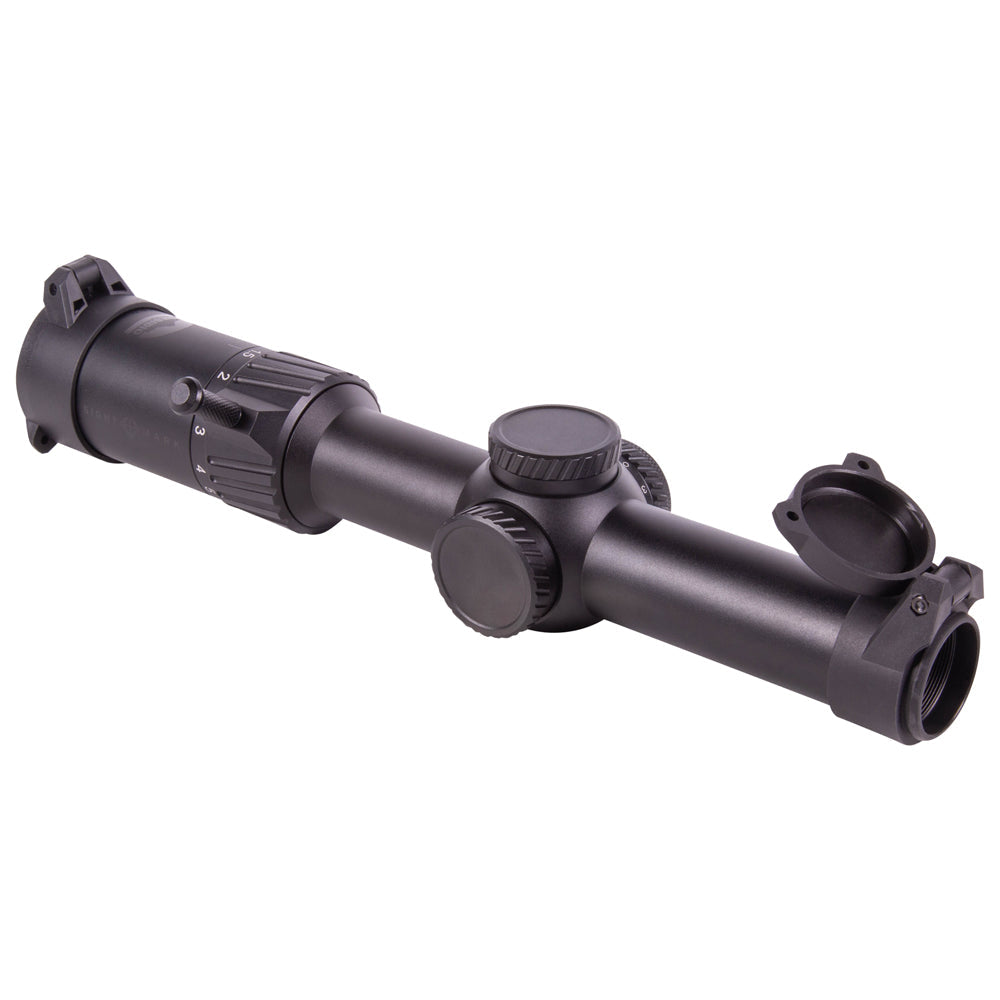If you're asking “what is an LPVO?”, you're probably choosing your first optic, considering an upgrade, or trying to understand what makes these scopes so popular. LPVO stands for Low Power Variable Optic—a type of rifle scope that gives shooters the flexibility to switch between close-quarters speed and mid-range precision.
In simple terms: an LPVO combines the speed of a red dot with the reach of a magnified scope. One optic, many roles.
What Makes an LPVO Different from Other Scopes?
The key difference is magnification. Traditional variable-power scopes usually start at 3x or 4x, making them slow and awkward up close. LPVOs, by contrast, start at 1x—or very close to it—which gives you the ability to shoot with both eyes open at close range, almost like a red dot.
Turn the dial, and now you’ve got magnification for longer shots. That’s the defining feature of LPVOs: they cover the gap between red dots and traditional scopes, allowing you to handle everything from 5 yards to 300 yards without swapping optics.
Here's the HTML product slider block for the LPVOs you specified: ```html
``` Let me know if you'd like to adjust the descriptions or layout!
How Does an LPVO Work?
An LPVO uses a variable zoom system—typically in the range of 1-4x, 1-6x, 1-8x, or even 1-10x. You adjust a dial to move between low and high power as needed. At 1x, you get fast target acquisition and wide field of view. At higher magnification, you can identify and engage targets farther out.
Unlike traditional scopes, LPVOs are engineered for rapid transitions. Some models, like those from Sightmark, include throw levers so you can switch magnification quickly without losing track of your target.
Internally, LPVOs are built with lens systems optimized for clarity and minimal distortion at all magnifications. Many offer illuminated reticles for fast aiming in low light, and most are shorter and more compact than standard hunting scopes.
A Brief History of the LPVO
The first true LPVO was created to solve a real-world problem. During urban combat missions like Operation Gothic Serpent (Mogadishu, 1993), Special Forces needed optics that could handle both close-quarters shooting and long-range overwatch. The result was the Schmidt & Bender Short Dot—the prototype for what we now call an LPVO.
Once the tactical community saw the benefits, LPVOs quickly spread beyond the military into civilian, competition, and law enforcement circles. Early models were expensive and bulky, but modern LPVOs are lighter, more affordable, and packed with features.
What Is an LPVO Used For?
The better question is—what isn’t it used for?
- Home defense: 1x mode gives you speed and situational awareness indoors.
- Hunting: LPVOs are perfect for thick brush, hogs, and deer in timber.
- 3-Gun competition: Fast transitions and flexible magnification make LPVOs a favorite.
- Law enforcement: Patrol rifles benefit from close/mid-range capability.
- Training: LPVOs are ideal for dynamic drills and real-world scenarios.
What Firearms Work with an LPVO?
While LPVOs are best known on AR-15s and modern sporting rifles, they’re far from exclusive to them. You’ll also find them mounted on:
- Lever-action rifles – modernized classics
- Shotguns – for defensive or hunting roles
- Bolt-action rifles – used for intermediate-range hunting or tactical use
With the right mount, almost any long gun can support an LPVO.

The Sightmark Presidio 1-6x24 is an example of an LPVO.
Key Features to Look For in an LPVO
When comparing LPVOs, pay attention to:
- Magnification range: (1-4x, 1-6x, 1-8x, etc.)
- Reticle type: Illuminated is essential for low-light work. BDC reticles are a plus.
- Glass clarity and field of view
- Turret adjustability
- Durability: Waterproofing, fog resistance, shockproofing
- Eye relief: Especially important for larger calibers
Why Choose an LPVO Over a Red Dot or Traditional Scope?
Still wondering what an LPVO is good for compared to other optics?
- Versus red dots: LPVOs give you magnification. Red dots don’t.
- Versus traditional scopes: LPVOs are faster up close. Traditional scopes are slower and heavier.
An LPVO gives you the best of both worlds—close-range speed and mid-range precision—all in a single package.
Mounting and Zeroing an LPVO
Mounting your LPVO correctly matters. Use a quality mount, level the optic, and adjust eye relief for full sight picture at all magnifications. Zero at 50 or 100 yards depending on your purpose, and confirm your zero across the full zoom range.
Conclusion: What Is an LPVO? It’s the Most Versatile Rifle Optic You Can Own
If you want a do-it-all optic that can handle close-quarters defense, mid-range hunting, competitive shooting, and training, the LPVO is the answer.
Sightmark offers a full range of LPVOs built for reliability, clarity, and real-world performance. Whether you’re upgrading a home-defense rifle or building out your first AR, it’s hard to beat the balance of speed and precision that comes from shooting with an LPVO.
Frequently Asked Questions
What does LPVO stand for?
LPVO stands for Low Power Variable Optic.
How is an LPVO different from traditional scopes?
The key difference is magnification. LPVOs start at 1x, allowing for close-quarters shooting with both eyes open, and can be adjusted for longer-range shots.
How does an LPVO work?
An LPVO uses a variable zoom system, typically ranging from 1-4x to 1-10x. By adjusting a dial, shooters can switch between low and high power magnification for different shooting scenarios.
What are some features of LPVOs?
LPVOs are engineered for rapid transitions, with some models including throw levers for quick magnification changes. They are built with lens systems optimized for clarity and minimal distortion, and often have illuminated reticles for low-light aiming.
What was the prototype for the first true LPVO?
The Schmidt & Bender Short Dot was the prototype for the first true LPVO, created to meet the needs of Special Forces during urban combat missions.







